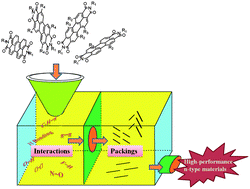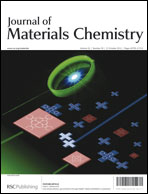Perylene diimide (PDI) and its derivatives hold great promise, since they are undeniably considered as an important family of organic n-type semiconductors with both high carrier mobilities and air stabilities comparable to p-type ones, although they traditionally stand out as a class of high-performance dyes and pigments. In this feature article, we summarize the influences of substituents on different positions (imide, ortho, bay) of PDI on their electronic and morphological (packing) properties, which are in close connection with the ability for carrier transport. Then representative molecular packing motifs for PDIs are also classified, with an emphasis on the intricate interplay of intermolecular interactions, packing motifs and electron transport properties of perylene imide related carrier transport materials from a theoretical point of view, towards paving the way for boosting and improving the electron transport mobilities and air stabilities of PDIs-based materials.
You have access to this article
 Please wait while we load your content...
Something went wrong. Try again?
Please wait while we load your content...
Something went wrong. Try again?


 Please wait while we load your content...
Please wait while we load your content...